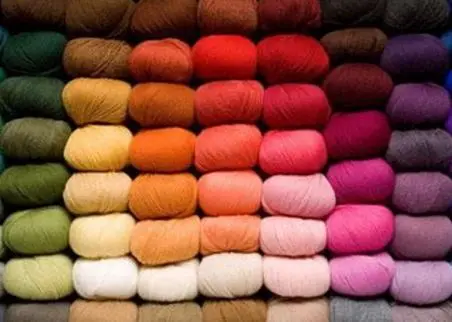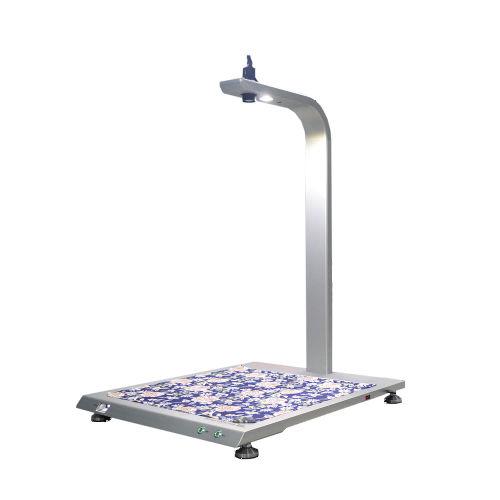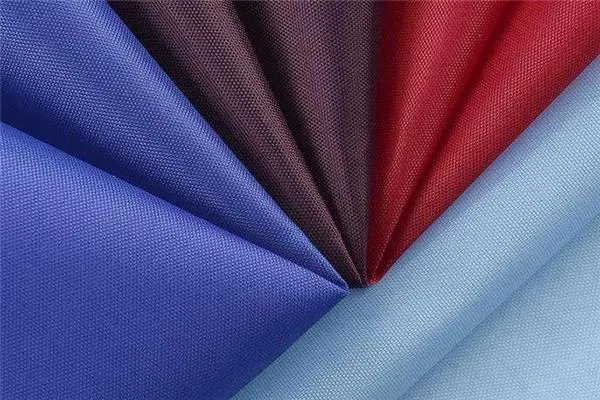In the global or local market, consumers want garments to be more stable. This is especially true in the international market. Fabrics there constantly face special requirements for anti-shrinkage. This is a nuisance to dyeing and printing.
01 Mechanical pre-shrinkage finishing
It uses physical methods to reduce fabric shrinkage. This shrinkage happens after immersion in water. The process called mechanical pre-shrinkage finishing.
Fabrics face tension in the warp during dyeing and finishing. The flexural wave height in the warp falls, causing elongation. Wet hydrophilic fibre fabrics swell. This makes the warp and weft yarns wider. The wider warp yarns have higher waves and the fabric shrinks. Shrinkage is the term for shortening the original length and percentage. First, spray steam or spray on the wet fabric to pre-shrink it. Then, the warp is mechanically squeezed to raise the wave height. After that, the fabric is loosely dried. After pre-shrinkage, cotton fabric shrinks to less than 1%. The rubbing of the fibers, yarns, and yarns makes the fabric softer. Woolen fabrics can be pre-shrunk by relaxation treatment. The fabric rolls in warm water or the fabric is sprayed with steam. Then, it’s dried slowly in a relaxed state. This makes the fabric shrink in both the warp and weft.
02 Equipment classification
Rubber blanket pre-shrinking machines are common. They are typically the three-roller type. And they are mainly a ring of seamless rubber. They also have feed rollers and smooth, heated pressure rollers.
The rubber blanket keeps the right tension. It goes from the feed roll to the pressure roller between the two rolls. The rubber blanket has a rolling point. The fabric goes from the rolling point into the pressure roller and the rubber blanket, and then runs. The rubber blanket wraps the feed roll when the outer arc extends. The rubber blanket then wraps the pressure roller after the rolling point. The outer arc becomes an inner arc and shrinks. At the rolling point, the rubber blanket thins and stretches when pressed. After the rolling point, it thickens. This causes the fabric in it to shrink due to the tight pressure with the roller. The three-roll pre-shrinking machine has a wetting and loose drying device. You can use it for cotton fabrics and blends of cotton and chemical fiber.
Two rolls hysteresis pre-shrinking machine. It has a fabric feeding roller, blocking roller, and platen knife. The fabric feeding roller has a smooth surface and runs faster. The hysteresis roller has softer rubber. It runs a bit slower than the cloth feed roller. Near the point of entry into the rolling point of the two rolls, we mount the front end of the platen. Before shrinking, the feed roller speeds up to feed the fabric. But, at the rolling point, the slow roller and the resistance of the front of the pressure plate press the fabric. You can adjust how fast the feeding roller moves compared to the blocking roller. Or, you can control the spacing between the front of the pressure plate and the rolling point. These changes let you grasp the effect of fabric shrinkage. The two-roll pre-shrinking machine combines with moisture feeding and drying devices. Knitters use it on fabrics they knit. The fabric has a super-feeding device. It’s attached to the needle plate stenter for stenting. It causes warp direction relaxation by overfeeding and weft direction tension. It can also cause warp pre-shrinkage. This is especially true for thin and light fabrics.
03 The role and method of pre-shrinkage finishing
We pre-shrink fabric to make it shrink a certain amount in the warp and weft. This reduces the final product’s shrinkage and meets garment processing quality requirements. This treatment uses a compressible rubber blanket. It carries the fabric for pre-shrinkage. When force curls the rubber blanket, the outer arc lengthens and the inner arc shortens. If you bend it the other way, the original long side becomes short, and the short side becomes long. Pre-shrinkage treatment has fabric with a certain humidity. It runs close to the rubber blanket, through the compression zone. It goes from the outer arc of the rubber blanket to the inner arc, from the stretching part to the contraction part. The rubber blanket and pressure roller clamp the fabric and prevent it from sliding. The rubber blanket contracts and compresses, causing shrinkage.
Usually, treat the fabric before putting it in the machine. It’s treated with the right amount of water (10% to 15%) and heat. This makes the fiber softer and more flexible. Before burnishing finishing, we treat the wet fabric. Light pulp penetration or foam sizing accomplishes this. A drying cylinder treats the fabric. This strengthens the pre-shrinkage control and improves the pre-shrinkage effect. The rubber blanket pre-shrinks the fabric. It is first pre-baked to remove moisture. Then, after leaving the machine, a tension-free blanket dryer dries and irons it. This removes wrinkles from the excessive shrinkage during compression. The goal is to get a plump feel and soft luster.
04 Key points of pre-shrinkage finishing process
The pre-shrinkage treatment must keep three stabilities. First, the pre-shrinkage machine’s speed must stay stable. Also, the fabric’s moisture return rate must stay stable. It must stay stable as it enters the rubber blanket unit. Third, the steam pressure in the pressurised drying cylinder must stay stable. You must process the fabric shrinkage rate monitoring mark. Check the fabric’s pre-shrinkage rate. If you find a problem, fix it fast to keep the rate stable. Before shrinkage, we must manage staff and gear better. This is to prevent defects and to know how to fix them and cut the defect rate.
Pre-shrinkage finishing problems cause fish scale spots, warp wrinkles, rolling wrinkles, weft slant, drop cloth wetness, and insufficient shrinkage. Their solutions fix these issues. They also cause narrow doors.
Fish scale spot. The aging and fabric pre-shrinkage caused the rubber blanket to wear unevenly. This has made defects in the rubber or carpet. They need grinding or replacement.
Warp wrinkle. The fabric has to go into the pre-shrinking machine before it wrinkles or shrinks. This happens when the warp tension is too high. In pre-processing, work to stop warping. That is, pre-shrinking relaxes the taut fabric frame and reduces warp tension.
Rolling wrinkle. The cloth tension is too low. The cloth surface is too loose. The roller pressure is not equal on the left and right. Loose edges or uneven tightness can also cause rolling wrinkles. You can tighten the cloth frame to increase the tension. Also, adjust the feed roller to keep both sides even.
Weft skew. The cloth’s position is wrong. The guide roller is not flat. The pressure on both sides of the cloth roller is not even. To fix this, put the cloth in the right place. Make sure the guide roller is straight. Also, adjust the pressure so it’s even on both sides of the cloth roller.
Drop cloth wet. Due to the fabric in the process of excessive wetting. So, before shrinkage, control spray and speed to reduce them. This will fully dry the drop cloth.
Insufficient shrinkage. Pre-shrinkage effect is not good, poor dimensional stability. This is because the pressure roller is too high. The pressure roller is too cold. The cloth roller has too little pressure. The cloth has too much tension. You can reduce the pressure roller position. You can control the spray to wet. Also, you can raise the pressure roller steam pressure. You can raise the pressure to the fabric roller. And, you can reduce the fabric’s in and out tension.
Narrow door width. The last process shrunk the fabric before sewing the door. It shrunk so much that the door is too narrow. The fabric has too much tension from the shrinking. So, the fabric is narrow after shrinking. Processing should follow the technology. It must ensure the fabric’s width meets the requirements. In the pre-shrinkage process, reduce the feeding tension.
05 The influence of fibre and weaving shrinkage
The smallest synthetic fibers and blends shrink the most. Wool shrinks next, then linen, and cotton. Silk shrinks a lot too. Viscose, rayon, and artificial wool shrink the most.
From an objective view, cotton fabrics have some shrinkage and fading problems. The key is the finishing behind them. So the general home textile fabrics are pre-shrinkage treatment.
After the pre-shrinkage treatment, clothes won’t shrink. But, the treatment only reduces the shrinkage rate to 3% -4%, as the national standard requires. This limit is for all clothes, but is especially important for natural fiber clothes.
The fibres themselves absorb water and swell to some extent. Fibres usually swell anisotropically, except for nylon. That is, they get shorter and wider. Shrinkage is the difference in length of the fabric before and after it gets wet. It’s measured as a percentage of the fabric’s original length. Stronger water absorption causes more swelling. This leads to higher shrinkage rates and worse fabric stability. The length of the fabric is different from the length of the silk yarn used. We call the difference weaving shrinkage. Weaving shrinkage (%) = [yarn (silk) length – fabric length]/fabric length. Water dissolves the fiber, so the fabric length shrinks. Weaving fabric shrinks at different rates. The size of its shrinkage rate varies. The fabric’s structure and weaving tension are different. So, its shrinkage rate is different. Weaving tension makes the fabric tight and thick, but shrinks it a lot. Weaving shrinkage is small, fabric shrinkage is large. High tension makes the fabric loose and thin, but shrinks it a little. Weaving shrinkage is small, fabric shrinkage is large. In dyeing and finishing, to reduce fabric shrinkage, we often use pre-shrinkage finishing. It increases weft density to cut weaving shrinkage and fabric shrinkage.
06 Cotton fabric shrinkage causes
Cotton fibres grow with internal stress. It happens because of random hydrogen bond formation between the fibre molecules. This bond forms a 3D mesh structure. It creates stress between the fibres. To mercerise efficiently, you must remove or reduce internal stress. If not, it makes the fabric hard to widen. It also raises the stenting power. Even if forced to widen, the fabric will shrink due to the stress. This shrinkage makes the products too small. Cotton fabric processing creates internal stress. Stretching in spinning and weaving and dyeing and finishing causes it. This stress makes the fabric stretch and shrink. It builds up and causes shrinkage when washed, dried, and worn. Fabrics shrink in the process due to tension. This tension makes the warp yarn “straighten” and the weft yarn “ring curved”. It’s related to fabric tightness and structure.
07 Other causes of shrinkage
Fibre in the spinning. Yarn in the weaving, dyeing, and finishing. External forces shape the yarn fiber through stretching or squashing. This creates internal stress in the yarn fibre and fabric. The body releases internal stress in the dry or wet static state. It is also released in the wet dynamic state or the full relaxation state. This brings the yarn fibre and fabric back to their starting state. Different fibres and their fabrics shrink at different rates. This depends mainly on the fibres’ characteristics. Hydrophilic fibres, like cotton, linen, and viscose, shrink more. Hydrophobic fibres, like synthetic fibres, shrink less. Wet fibres expand due to soaking. This makes them larger. In fabric, it forces the weave point to tighten. So, the curve radius of the fibres there increases. This shortens the fabric. For example, cotton fibres expand in water. Their cross-sectional area increases by 40 to 50%, and their length increases by 1 to 2%. Synthetic fibres shrink when heated. For example, they shrink in boiling water by about 5%. Textile fibres face heat. It changes their shape and size. They can’t return to the initial state when they cool. Fibre heat shrinkage is the term for this. Before and after heat, the length shrinks. Heat shrinkage is the term used to describe the amount. Boil it in water at 100 ℃ to test it. The contraction is the percentage. It is also tested in hot air, over 100 ℃. And, in steam, over 100 ℃. Fibers shrink due to their structure and heat, time, and other conditions. But, the rates vary by fiber. For example, polyester shrinks 1% in boiling water. PVC shrinks 5%. And, wool shrinks 50% in hot air. Fibre affects textile processing. It also affects the size stability of its fabrics. They affect the design of the post-process. They provide the basis.
08 Factors affecting the shrinkage of fabrics
1、Raw materials
Fabrics of different raw materials, shrinkage rate is different.
In general, the fiber is hygroscopic. After it goes in water, it expands, its diameter increases, and its length shortens. It shrinks a lot. Viscose fibers can absorb up to 13% water. Synthetic fabrics absorb water poorly but shrink less.
2、Density
Fabrics of different densities, shrinkage rate is different.
If the density of the warp and weft is similar, the warp and weft to the shrinkage rate is also close. Fabrics have warp density and it shrinks a lot. Fabrics also have weft density, which is greater than warp density. Weft density also shrinks a lot.
3、Yarn thickness
Fabric yarn thickness is different, shrinkage rate is different. Yarn thick cloth shrinkage rate is large, yarn fine fabric shrinkage rate is small.
4、Production process
Fabric production process is different, shrinkage rate is different. In general, when weaving, dyeing, and finishing, stretch the fiber many times. Processing takes a long time. Fabric shrinks more when stretched more, and less when stretched less.
5、Fibre composition
Natural plant fibers, like cotton and hemp, absorb moisture. They also expand easily. Plant regeneration fibers, like viscose, do the same. This makes them shrink more than synthetic fibers (like polyester and acrylic). Wool shrinks because its surface has scales and it felts easily. This affects its size.
6、Fabric structure
In general, woven fabrics keep their shape better than knitted ones. High-density fabrics keep their shape better than low-density ones. In woven fabrics, plain fabrics shrink less than flannel. In knitted fabrics, flat-needle shrinks less than ribbed.
7、Production process
The fabric in the dyeing, printing, and finishing process will stretch the machine. This puts tension on the fabric. However, it is easy for the tension to release after the fabric gets wet. So, we will find the fabric shrinks after washing. In the actual process, we generally use pre-shrinkage to solve this problem.
8、Washing care process
Washing care includes washing, drying, and ironing. Each of these steps affects fabric shrinkage. For example, hand-washed samples are more stable than machine-washed samples. Also, the wash temperature affects stability. In general, the higher the temperature, the worse the stability. Drying the sample in a certain way also greatly affects the fabric shrinkage.
For more information on textile testing methods/standards
or textile testing machines, contact us:
What’s App: +86 180 2511 4082
Tel: +86 769 2329 4842
Fax: +86 769 2329 4860
Email: medium@chiuvention.com



